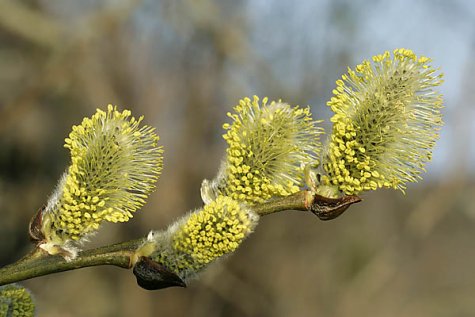Pussy willow flowering
Photo: Arne Ader
Translation: Liis
Goat willow or pussy willow.
Goat willow; pussy willow; great sallowRaagremmelgas Salix caprea
About twenty willow species grow in Estonia. One reason why willow species are so poorly known is the fact that they form hybrids or crosses. As for soils willows are undemanding, preferring damp habitats, but they like light. Pussy willows were brought indoors at Easter, but these were actually buds and the flowers wait for their time hidden in thick white fur. In the spring sun the yellow stamens of the male catkins and the greenish pistils of the female catkins open. Willows are mostly dioecious, the female flowers are on female plants and the male catkins on male ones.
The goat willow is the only one of the early-flowering willows to grow into a tree. It can compete with other larger trees in the forest understory, but also manages successfully in open habitats: roadsides, ditch banks, copses.
Translator's note: Willows growing as shrubs are called generally called "paju“ and their relatives that grow into trees, "remmelgas“ in Estonian. In English some willows are called sallow or osier. Osier is often used for willows such as Salix viminalis that have pliable branches useful for wickerwork. Sallows are usually broad-leaved willows, typically the goat willow or great sallow described above.









